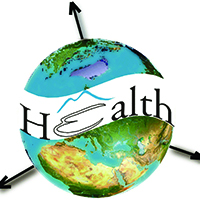Cascading effects of COVID-19 on population mobility and air quality: An exploration including place characteristics using geovisualization

All claims expressed in this article are solely those of the authors and do not necessarily represent those of their affiliated organizations, or those of the publisher, the editors and the reviewers. Any product that may be evaluated in this article or claim that may be made by its manufacturer is not guaranteed or endorsed by the publisher.
Authors
This study hypothesizes that public health responses to coronavirus disease 2019 (COVID-19), including a mandated restriction of activity (commonly called a €˜lockdown') resulted in reduced transportation activities and changes in air quality in Texas, USA. This presented a natural experiment where population mobility and air quality before and after the lockdown could be compared. Changes in mobility were measured by SafeGraph mobility data (from opt-in smart phone applications that transmit location data) and air quality changes were based on NO2 concentrations measured by the European Space Agency's Sentinel-5 Precursor satellite (from the TROPOspheric Monitoring Instrument). The changes in population mobility and NO2 concentration between mid-March 2020 (lockdown initiated) and the end of 2020, as compared to the same time window in 2019, were the basis of exploring the lockdown hypothesis. Additionally, numerous socio-economic (place based) indicators were hypothesized to follow public health vulnerability assumptions based on COVID- 19 incidence patterns. This hypothesis was subjected to geovisualization techniques in order to find potential patterns and insights into the complex combinations of these place-based data. Our results suggest that simultaneously visualizing COVID-19, mobility, air quality and socio-economic data yields insights in underlying spatial processes related to public health policy decisions. The hypothesis that the lockdown resulted in reduced mobility and NO2 concentrations was found partially correct - this trend was observed in highly urbanized areas, but not in less populated areas. Data related public health vulnerability assumptions (e.g. a region's age, poverty, education, etc.) were agreed with in part, but disagreed with in part.
How to Cite

This work is licensed under a Creative Commons Attribution-NonCommercial 4.0 International License.
PAGEPress has chosen to apply the Creative Commons Attribution NonCommercial 4.0 International License (CC BY-NC 4.0) to all manuscripts to be published.













